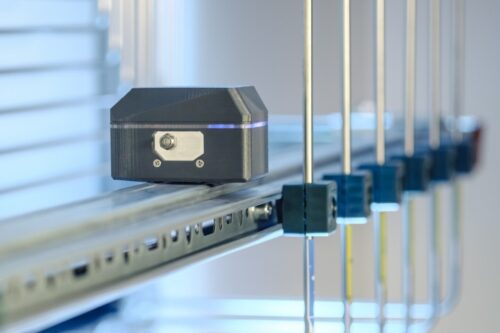Fraunhofer researchers have developed sensors to detect leaks in hydrogen lines and tanks, ensuring safe monitoring for shipments and industrial facilities.

Fraunhofer researchers have developed sensor systems and measuring equipment to detect leaks in hydrogen lines and tanks. The technology is designed for continuous monitoring of hydrogen shipments and chemical industry facilities. By integrating multiple sensor technologies, the researchers aim to enhance safety across various hydrogen applications. The team have created sensor and measurement systems that can reliably detect even the smallest hydrogen leaks, enabling quick and efficient leak detection.
Ultrasonic sensor with photoacoustic effect
The researchers use the photoacoustic effect, where light makes a gas vibrate and produce sound waves, in their ultrasonic sensor. The device directs light into a chamber, generating resonant sound waves in the gas at ultrasonic frequencies. When hydrogen enters through a membrane, the resonance shifts, altering the tone, which MEMS microphones detect. Beyond leak detection, the sensor is highly precise and can identify even tiny traces of other substances in hydrogen. This is crucial for applications like fuel cells in trucks, where high-purity hydrogen is required to prevent damage to sensitive membranes.
Laser spectrometer
Storing hydrogen in high-pressure tanks or at -253°C in cryotanks is complex, but using ammonia (NH₃) as a carrier offers a simpler alternative for storage and transport. However, since ammonia is highly toxic, fast and reliable leak detection is essential. The team developed a laser spectrometer for remote ammonia detection. The device absorbs ammonia’s specific wavelength and reacts instantly, displaying the results in real time.
Raman spectroscopy
The third measurement system is based on Raman spectroscopy, a technique named after scientist C. V. Raman. This effect occurs when light interacts with matter, causing the reflected light to have a different wavelength than the original source. For the TransHyDE project, researchers created a filter-based Raman sensor that selectively detects hydrogen in complex environments. The device uses low-cost components, including a CMOS camera, and is portable, making it useful as a mobile testing station for hydrogen quantification. It is applied in areas such as hydrogen production in the energy sector.
All the sensor systems are designed for flexibility, allowing adaptation to various applications. Fraunhofer experts also provide guidance to industry partners, energy suppliers, and hydrogen project operators on safe usage.








